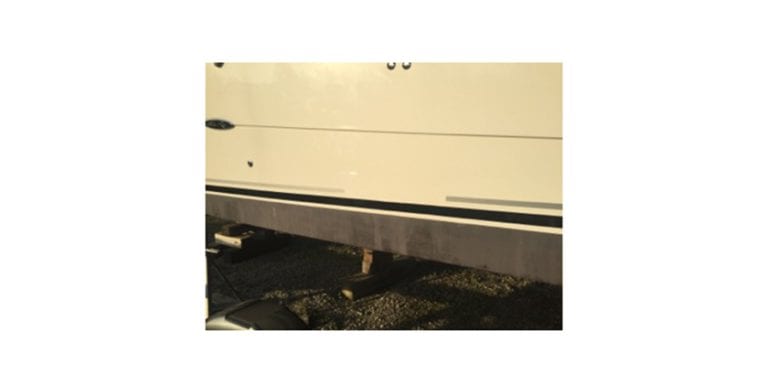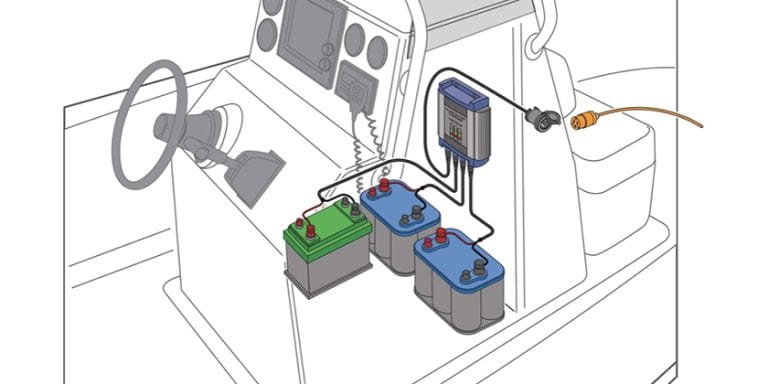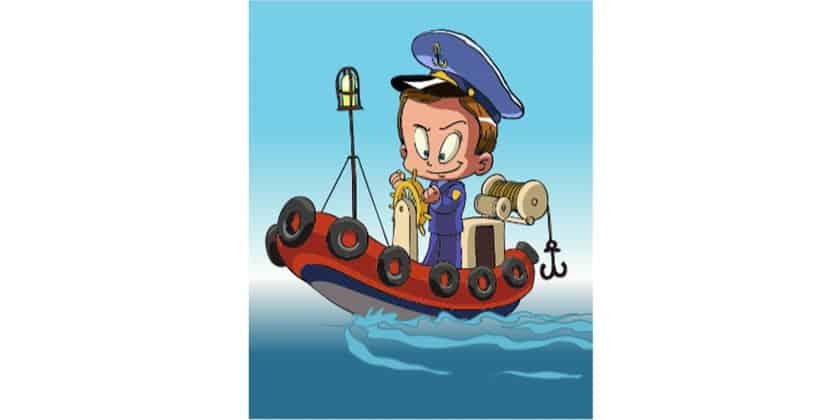Ask Andrew: Maintaining your anchor and anchor rode
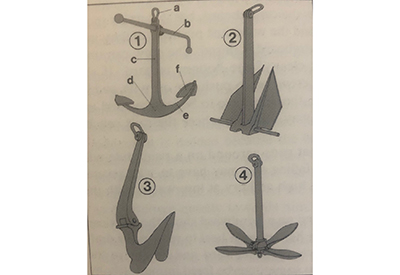
Apr 12, 2023
four different types of common anchors
‘A chain is only as strong as its weakest link’ is a cliche that is quite applicable in boat maintenance. In a literal sense, a weakest link can apply to an anchor rode, and a weak link in this chain can spell disaster.
Transport Canada specifies the sizes of anchors required in the Canada Shipping Act, detailed more commonly in the Safe Boating Guide:
For Sail and Power boats up to 6 m (19’8”): One (1) anchor and at least 15 m (49’3”) of cable, rope or chain in any combination
For Sail and Power Boats over 6m and up to 9m (19’8” – 29’6”): One anchor and at least 15 m (49’3”) of cable, rope, or chain in any combination
For Sail and Power Boats over 9m and up to 12m (29’6” – 39’4”): One anchor and at least 30 m (98’5”) of cable, rope or chain in any combination
For Sail and Power Boats over 12m and up to 24m (39’4” – 78’9”): One anchor and at least 50 m (164’1”) of cable, rope or chain in any combination
For Sail and Power Boats over 24 m (78’9”): One anchor and at least 50 m (164’1”) of cable, rope or chain in any combination
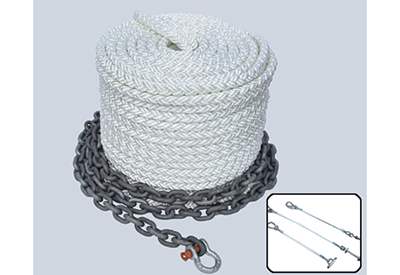 a combination rode, of chain and rope
a combination rode, of chain and rope
The rules are straightforward: The larger the boat, the longer the anchor rode needs to be. Presumably, the rationale is that larger boats will venture into deeper water, and therefore will require a longer anchor rode to enable an anchor’s effective use.
Transport Canada doesn’t specify:
a) The type of anchor used (danforth, plough, hook, claw or scoop), which is based on the sea-bottom and holding capabilities.
b) The size/weight of anchor used.
c) the combination of cable, chain or rope, the materials used, the connection types as the anchor rode.
Many of us leave thoughts of anchoring as a low priority: we want to go out on the water with the wind in our hair. However, there are several reasons why having a well maintained and functional anchor is important:
• When waiting for docking space
• When waiting for permission to enter a marina or mooring field
• For safety and security reasons
• In difficult weather conditions or low visibility
• During maintenance, or when crew have their hands full with other tasks
This is complicated by questions of where to anchor, which can be determined by:
• The depth of the water
• The proximity of environmental dangers such as sandbanks or rocks
• Tidal considerations such as strength, direction, and rising or ebbing
• Shelter from strong winds
• The distance between vessels
• The length and draft of the vessel
• The reason for anchoring
• The length of the vessel’s anchoring line
• The anchor’s hold on the sea floor
• The location of shipping routes
• Port logistics
• The proximity of landing points
There are a few rules of thumb that can be used:
i) For maximum holding power, the anchor rode should be 4 – 7 times the depth of water that you are anchoring in
ii) There are advantages and disadvantages in the use of cable, chain or rope. Chain provides superior strength and abrasion resistance, while it is heavy, bulky and expensive. A good compromise is to connect 6-30’ of chain to the anchor, with 3-strand nylon line connected to the chain.
iii) Chain and nylon line diameter should increase based on the length of rode used. Ie a 50’ anchor rode could have 3/16” chain. A 250’ anchor rode should have 7/16” chain. The limiting factor here should be the size of chain that a windlass can accommodate.
So where is the weakest link, and where should we look to maintain our anchor and rode?
 a strong connection point between anchor shackle and rode
a strong connection point between anchor shackle and rode
Keep everything clean. Hose down anchor and rode after every use with freshwater (especially if that anchor has been in salt-water.
Periodically lay out the rode and inspect it for rust, damage, and corrosion. Rope should be checked for pliability, abrasion, and fraying. Coil the rode in such a way that it is easily and effectively deployed.
Find the weak points, often these are at the connections: shackles become loose, hinge points stiffen, and knots untie.
Have back-ups: on every shackle that can loosen, add some mechanic’s wire to keep the shackle tight. Keep spare anchor rode (or even a spare/emergency anchor) aboard.
Make things easy on yourself: colour-coded ties every 10, 20, 50, or 100 feet can make anchoring that much easier by measuring out rode lengths. Add a separate line to your anchor to make raising and lowering easier.
Keep the anchor locker maintained. It should be clean and dry, with enough space to coil the rode, and allow it to dry out between periods of use.
Seaworthy and safe is the name of the game, and we can’t have one without the other. A good maintenance plan is essential, and maintaining the anchor is a great maintenance task to take on prior to launch.
 Andrew McDonald is the owner of Lakeside Marine Services – a boat repair/maintenance firm based in Toronto. Andrew has worked in the marine industry for 12 years and is a graduate of the Georgian College ‘Mechanical Techniques – Marine Engine Mechanic’ program.
Andrew McDonald is the owner of Lakeside Marine Services – a boat repair/maintenance firm based in Toronto. Andrew has worked in the marine industry for 12 years and is a graduate of the Georgian College ‘Mechanical Techniques – Marine Engine Mechanic’ program.



